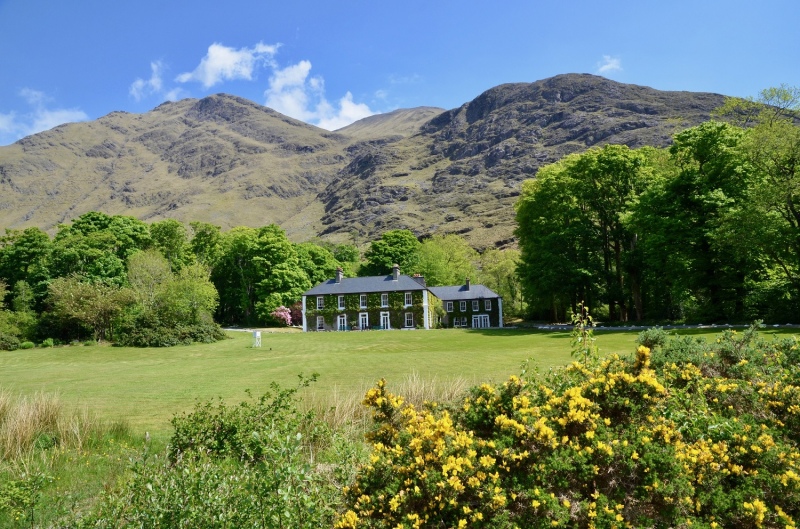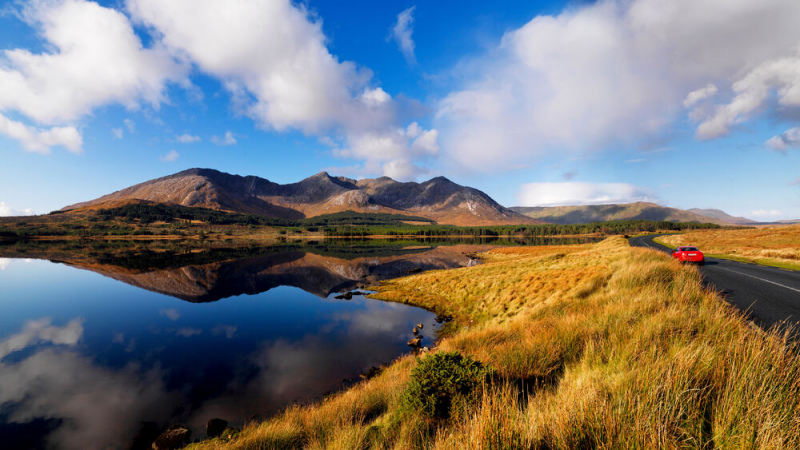
Connemara National Park
Situated in the west of Ireland in County Galway, Connemara National Park covers some 2,957 hectares of scenic mountains, expanses of bogs, heaths, grasslands and woodlands. Some of the Park's mountains, namely Benbaun, Bencullagh, Benbrack and Muckanaght, are part of the famous Twelve Bens or Beanna Beola range.
Much of the present Connemara parklands formed part of the Kylemore Abbey Estate and a visit to the Abbey, home of the Benedictine nuns, is a must for many visitors to the country.
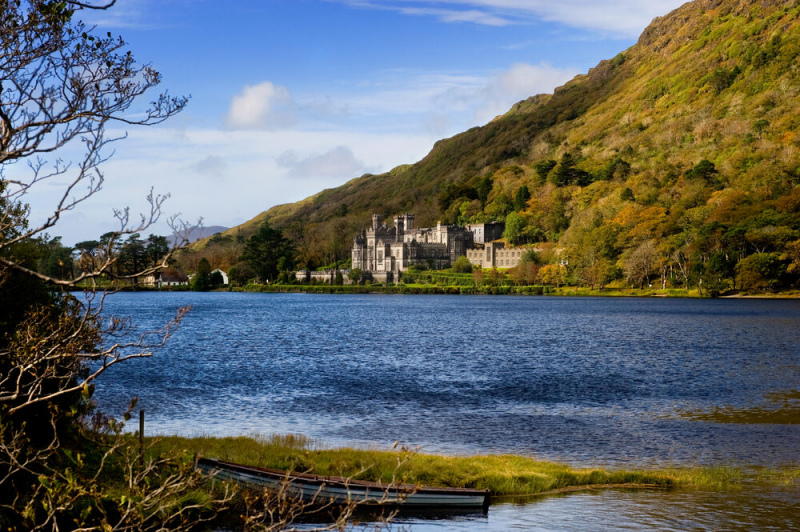
Kylemore Abbey
Kylemore Abbey, built in 1868, is one of the great baronial style castles remaining in Ireland and its six-acre Victorian walled garden, created by Mitchel Henry in tandem with the building of Kylemore Castle (now Kylemore Abbey) is one of Ireland’s finest gardens.
In 1920, the castle was turned into an abbey when it was purchased by the Irish Benedictine nuns. Visitors to the three reception rooms in the abbey are touched by its history, steeped in romance and tragedy. The community of nuns re-opened their international boarding school here and also established a day school for local girls.
Visitors are also welcome to visit the recently restored neo-Gothic church (circa 1871), mausoleum and restaurant. The craft shop features the work of well known Irish makers of pottery, jewellery, knitwear and much more.
The complimentary shuttle bus will take visitors to the restored Victorian walled garden. With two distinct areas, the kitchen garden and the flower garden, the garden is completely enclosed by a brick and limestone wall and won the prestigious Europa Nostra Award for gardens in 2000. Two of the 21 original glasshouses have been restored. The restored head gardener’s house and workmen's bothy are also open to visitors. The garden visit is a must for both garden enthusiasts and non-gardeners alike.
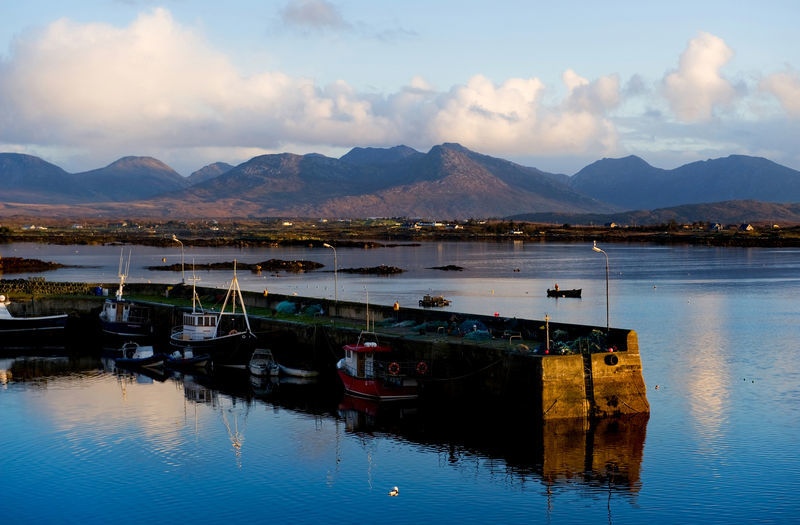
Roundstone
Roundstone is one of the oldest fishing villages in Connemara. The village was built in the 1820s by Scottish engineer Alexander Nimmo. who settled in Connemara. In Roundstone, you will find a busy little harbour, where local fishermen prepare and return with the days catches of lobster, crayfish, crab and mackerel, plus a variety of other fish.
Roundstone is situated in the heart of Connemara, on the west coast, an area of great natural beauty, as well as being the birthplace and inspiration for many artists. It has also been described many times as a “botanists delight” as many wildflowers, rare to this country, are found in the area known as Errisbeg which rises almost to a 1,000 ft (west of the village).
Roundstone nestles amongst the twelve Pins and is bordered by the vast Atlantic ocean. Dogs Bay and Gurteen Beach set back and filled with the clearest Atlantic water can be enjoyed in this area (2 miles from Roundstone.) Not only can the beaches be enjoyed from the swimmers and other aquatic water sports point of view, but to those that are interested, the sand is pure white, as it is not formed of quartz grain but of shells exclusively.
In the village itself, there are lots of pubs with traditional music most evenings, and of course some excellent restaurants. For the young who like to indulge in sport, Roundstone offers tennis courts, basketball, badminton and a football pitch.
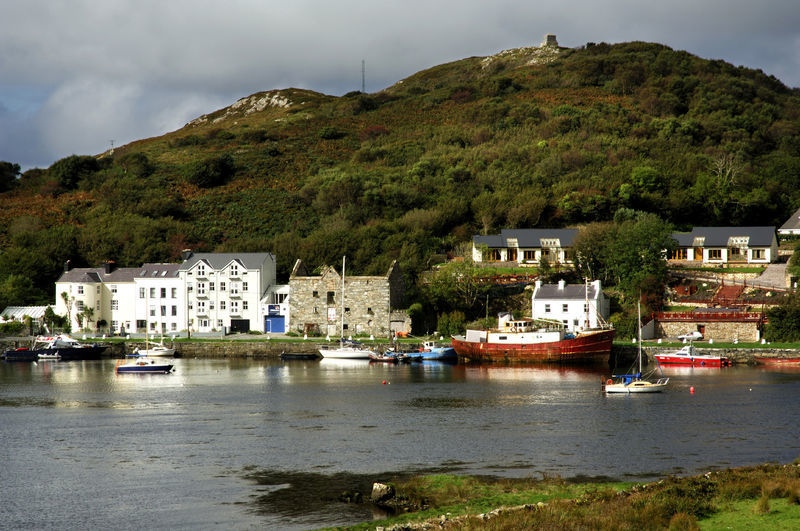
Clifden
Set between the Atlantic Ocean, 12 Ben Mountains and preserved boglands, lies the town of Clifden on the Coast of Connemara. Peruse the many shopping choices in Clifden from sweater shops, quality gift shops, boutiques to antique and souvenir shops. The town has many hostelries for you to sample; from the genuine ‘quaint-Irish’ to the more trendy you are sure to find something to suit your taste.
Other points of interest include:
Marconi Telegraph Station: Opened in 1907. This was the first fixed point-to-point telegraph station ever built and employed over 800 people until it was closed when attacked during the Civil War in 1922.
Alcock & Brown Monument: On June 15th 1919 John Alcock and Arthur Whitten-Brown flew 1900 miles from Newfoundland in a Vickers Vimy biplane. It took them just over 16 hours at which point they crash-landed in Derrygimlagh bog, close to the Marconi station. There is now a tail-fin shaped monument on the Errislannan peninsula pointing down to the exact spot in the bog where the plane landed.
Where to Stay:
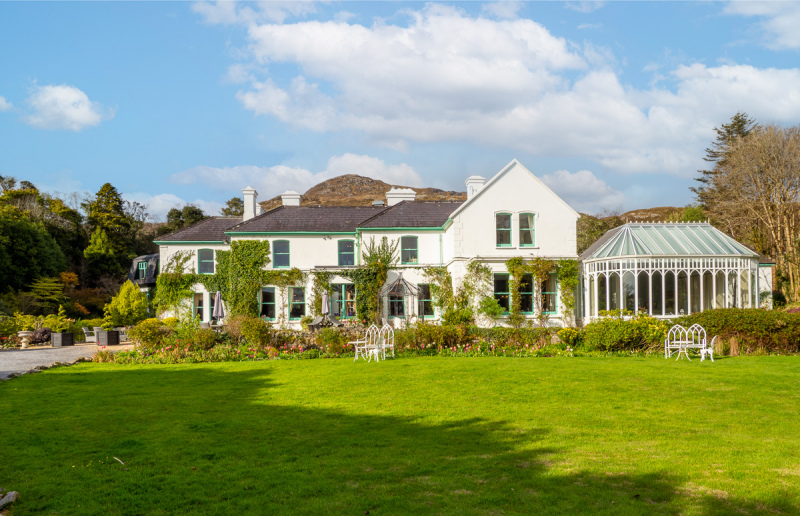
Cashel House
Cashel House is nestled in 50 acres of award-winning gardens overlooking Cashel Bay, offering a warm welcome in its cozy 18th-century historic setting. Unwind in the tranquil atmosphere, relax by open fires in the Drawing Rooms, and retire to comfortable accommodations. At Cashel House you can indulge in delicious Country House Cuisine featuring local seafood and Connemara Lamb while enjoying views of Cashel Bay.

Rosleague Manor
Resting on the quiet shores of Ballinakill Bay, and beautifully secluded within 30 acres of its own private woodland, Rosleague Manor Hotel in Connemara is one of Ireland’s finest regency hotels.
Currarevagh House
Built by the present owner's ancestors in 1842, Currarevagh House is a Victorian country manor romantically situated on the shores of Lough Corrib in 150 acres of private woodland.
Having all Connemara (including the Aran Islands and The Burren) within easy reach for touring, Currarevagh is the perfect base for exploring the magnificent West of Ireland.
Delphi Lodge
Located in a wild and unspoilt valley of extraordinary beauty, the 1000 acre Delphi Lodge is one of Ireland’s hidden treasures. The historic lodge, surrounded by the tallest mountains in Connemara, overlooks the lakes and rivers of the Delphi valley, famous for their salmon and sea-trout fishing.
